Friday, October 31, 2008
14524
Eyelid Ptosis: Late Results of Reconstruction with Modification of Frontal Muscle Flap Technique
Method:
Surgical technique - Eighteen subjects with severe ptosis and poor levator function were submitted to this technique:
1. Two musculocutaneous incisions are performed on the natural fold ( or 5mm from the ciliary border if the fold is absent) and near the eyebrow, both 2,5cm long.
2. One cutaneous incision, 3cm long, on the hairline.
3. A musculocutaneous tunnel is fashioned between the inferior e superior palpebral incisions.
4. Through the hairline incision the forehead is undermined from the frontal muscle until the superior palpebral incision is achieved.
5. Through the superior palpebral incision, the frontal muscle flap is elevated laterally to the supraorbitary pedicle.
6. The freed flap extremity is passed under the palpebral musculocutaneous tunnel and sutured on the tarsal plate.
7. A relaxing incision is performed through the hairline incision to provide de correct position of the eyelid. The relaxing incision must be parallel to the tarsal pla
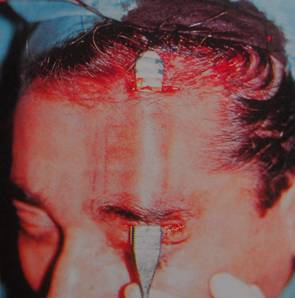 |
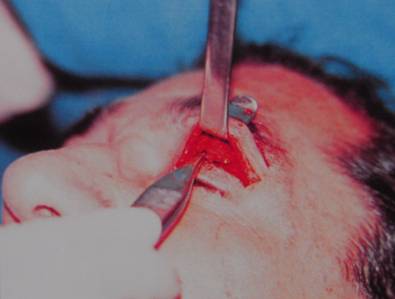 |
||||
 |
|||||

 |
Patients - The Seven patients with bilateral severe ptosis and 11 patients with unilateral severe ptosis. In 3 patients the Bell's reflex was absent. The Follow-up period ranged from 18 to 72 months. Aesthetic outcome and visual improvement were based on the patients' opinion. The success of the surgery was measured by: presence of orbitopalpebral fold, upper eyelid elevation as preoperatively planned (when the frontal muscle is requested) and upper eyelid contour.
Results: All patients reported visual and aesthetic improvement. One patient whose Bell's reflex was absent developed bilateral corneal ulceration treated with ocular occlusion and eyedrops with no further sequelae. Seventeen patients presented the visual axis freed, after the follow-up period, most of them with the eyelid position near the preoperative proposal. One patient present the visual axis covered, even 12 months after the surgery, frontal muscle flap is still not working.
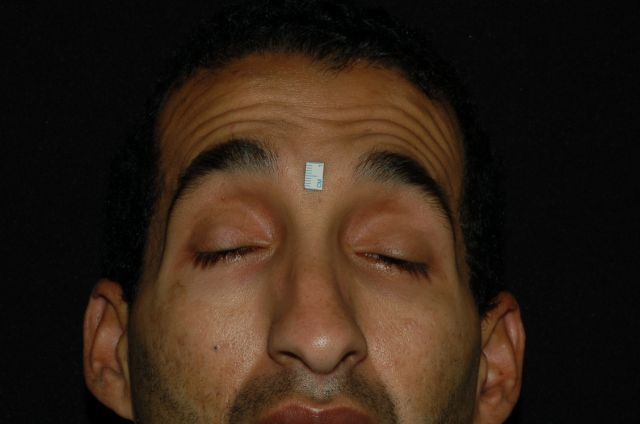

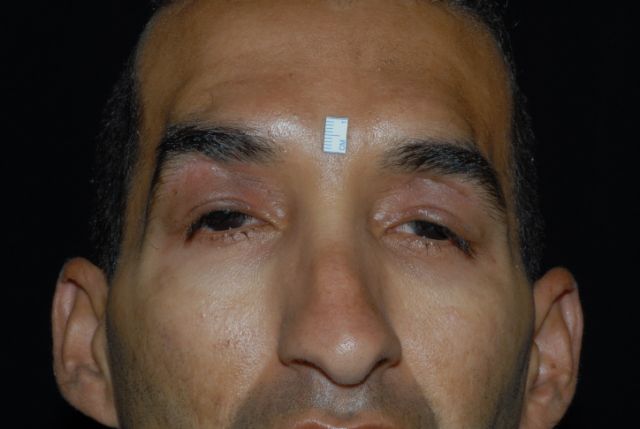
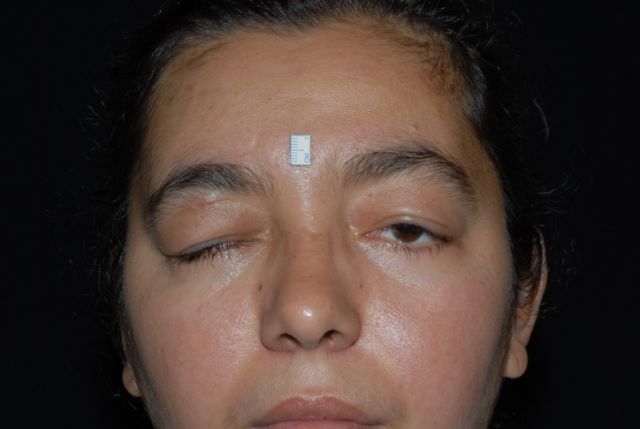

Discussion: The Modified Frontal Muscle Flap Technique is a reliable procedure that can be used in severe ptosis with poor or absent levator function. This technique provides outcomes comparable with all others severe ptosis techniques. Furthermore, this muscle flap technique does not use either synthetic or distant fascial grafts. Some modification should be introduced to the Song's original technique, such as hairline incision and the relaxing incision for either facilitate the dissection and regulate the ptosis correction.
In early postoperative period of the patients whom Bell's reflex is absent, extra care should be taken to avoid corneal ulceration using Frost suture. Furthermore, ocular occlusion during night should be used indefinitely.
